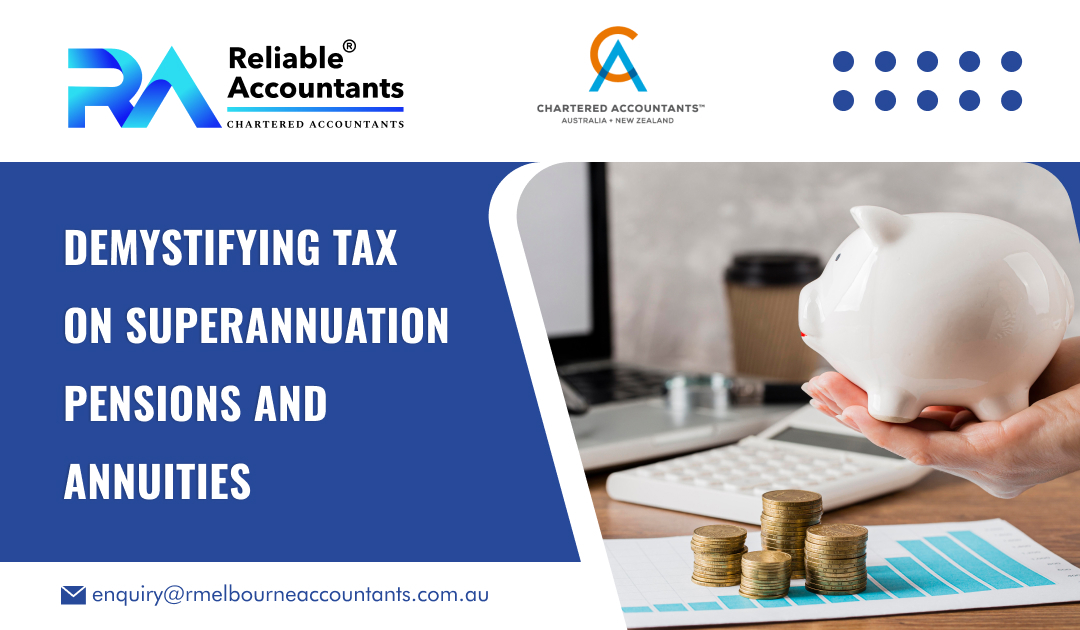Superannuation, pensions and annuities can be a crucial part of your retirement plan. However, understanding the tax implications is essential. Let’s explore how to manage income from superannuation pensions and annuities in your tax return.
Overview of Super Pensions
First, let’s dive into super pensions. Super pensions are regular payments you receive from your super income stream. It doesn’t include government payments, i.e. the age pension. This can be from:
- various sources like Australian super funds, life insurance companies or retirement savings account (RSA) provider
- from a fund accepted for the benefit of Commonwealth, territory or state employees and their dependents, such as:
- the public sector superannuation scheme
- the Commonwealth Superannuation Scheme
- the result of the demise of another person
Based on your age and the type of income stream you get, you may have to declare different items in your tax return. These payments may have different tax components taxed, untaxed and tax free.
- A taxed element: the portion of the benefit on which tax has been paid already in the fund
- An untaxed element: the portion of the benefit that is taxable because the tax has not been paid in the fund
- A tax-free component: the portion of your benefit, which is tax-free.
Your PAYG Payment Summary: The superannuation income stream from your super fund will provide the necessary details for your tax return. The ATO prefills these amounts when you use their online tax return service.
An Australian super income stream tax offset may be available to you. The amount of tax offset you can receive on your taxed element may be shown in your PAYG payment summary – superannuation income stream.
To determine how your super pension will be taxed, you must first understand how tax applies to super. If you receive an income stream, check with your superannuation fund to see if it is a capped defined benefit income stream.
Overview of Annuities
Now let’s talk about annuities. Annuities are regular payments you receive in exchange for a lump sum payment. Typically from a life insurance company or friendly society, they often have both taxable and tax-free components. Your accessible income includes taxable annuity payments. On your PAYG payment summary, individual non-business will show the annuity amounts that you must declare in your tax return. If you’re a reversionary beneficiary, you’ll receive annuity payments. When the original member passes away, managing your superannuation pensions and annuities is crucial for a financially secure retirement. The following are the benefits of annuity:
- Income for the rest of your life, irrespective of how long you live.
- Returns depend on average life expectations, so if your life expectancy is longer than the average person’s, you’ll get more in total payments.
- From the age of 60, purchased annuities using super money are tax-free.
- Tax-free investment earnings.
- Annuities can be used to complement other retirement income streams.
- Income payments can be indexed to maximise each year to deal with the effect of inflation.
Conclusion
We’re here to help you understand and navigate the tax aspects. Reach out to Reliable Melbourne Accountants for expert guidance on your super and annuity income. Let’s make your retirement tax efficient. Contact us today for expert guidance.

